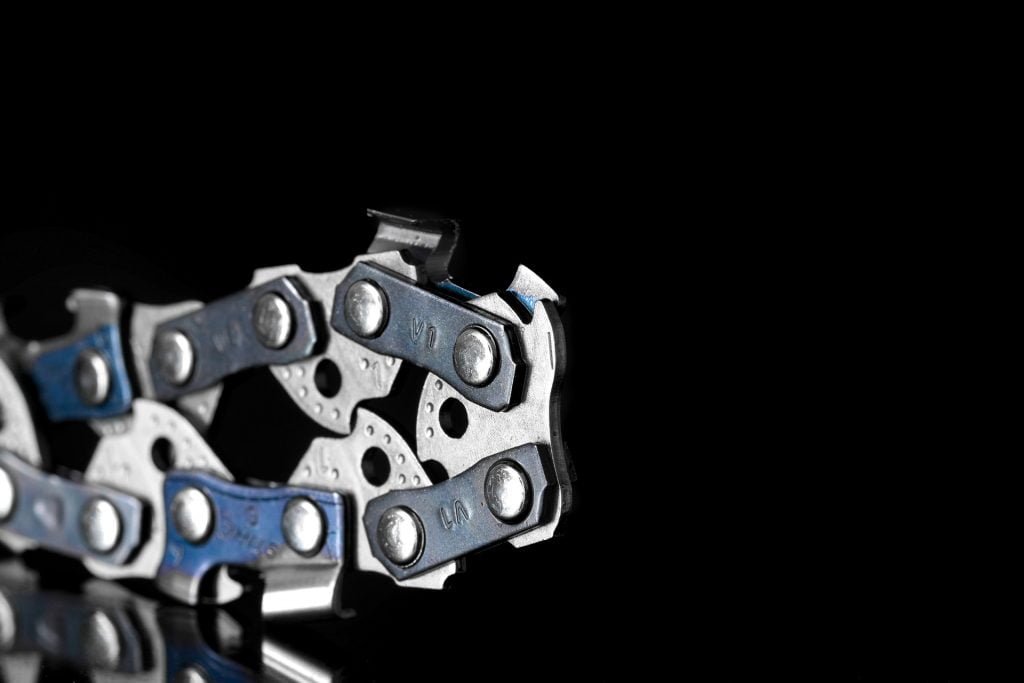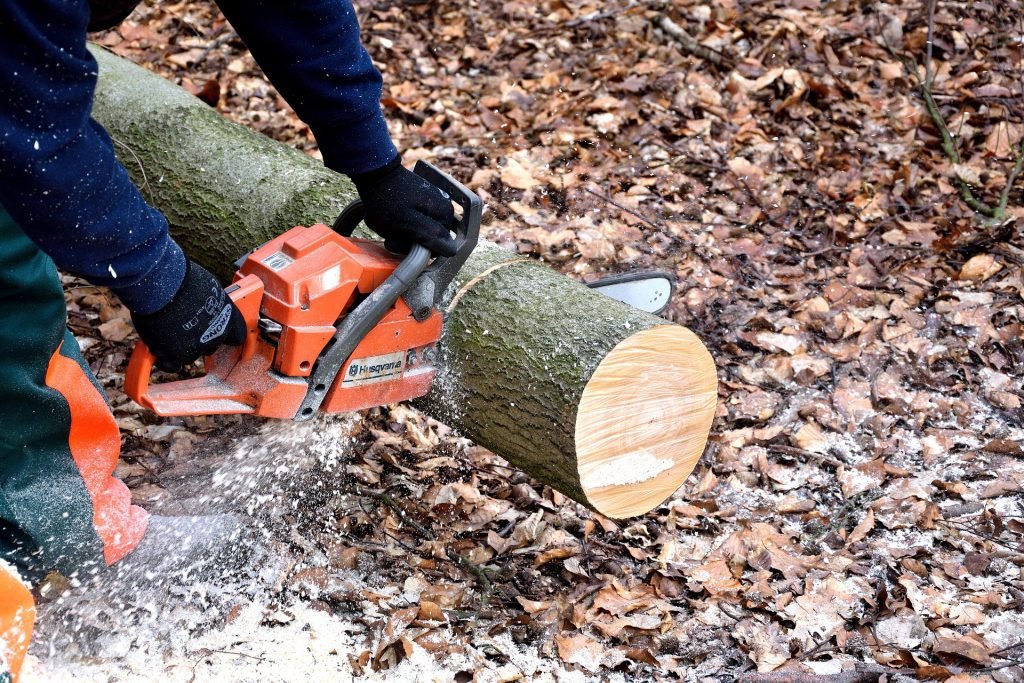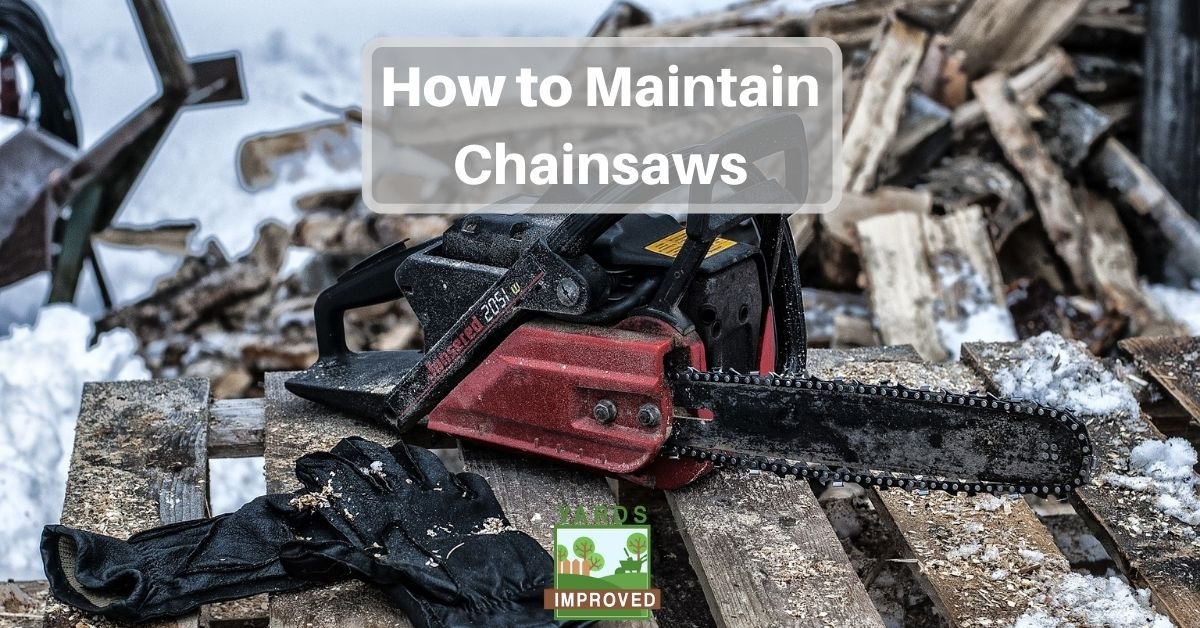A well-maintained chainsaw is a marvelous tool for taking care of trees and bushes in your yard. Whether you need to remove some branches or take down a whole tree, a chainsaw that’s in tip-top shape is important to make the job both fast and safe.
Maintaining your chainsaw – whether it’s electric or gas-powered – isn’t hard. But as with everything else, doing it regularly will save time and money. Here are some tips for keeping your saw cutting smoothly!
Beginning Of The Season
Like many outdoor tools, chainsaws usually get put into use in the spring. There are a few points to check before the first use of the year.
Check the spark plug
The spark plug is crucial to even getting your gas-powered chainsaw running.
If the spark plug goes bad, you’ll need to replace it. But some basic steps might help preserve its life.
If you see a lot of black residue on the plug’s electrodes, the carburetor may need adjusting.
Return the plug to its socket, but don’t connect it for now.
Drain the tank
Was the chainsaw stored with fuel? We don’t recommend that, but we know it happens. But fuel goes flat over time. If the saw hasn’t been used in more than two months, you’ll need to drain the tank and clean the fuel filter. Lacquer thinner is good for removing impurities from the filter; allow your filter to soak in it before replacing it in the saw.
Clean the air filter
Follow your user’s manual to remove the air filter, then clean it. Most can be cleaned with soapy water. Be sure to rinse it thoroughly with clean water and let it dry before replacing it.
Clean the muffler area
Debris can accumulate inside the muffler assembly, blocking air from passing through. The spark arrestor is a screen that filters out debris before it gets to the muffler itself. Again, follow your user’s manual to locate the spark arrestor. Clean it off with a toothbrush then replace it.
Turn the bar and clean the lubricant outlet
Occasionally flipping your chain bar will help it wear more smoothly.
Unscrew it, including the tensioning screw. Wipe off the bar and the housing and bolts it connects to.
While you’re here, it’s a great time to make sure the lubricant isn’t blocked. It usually drips out near the tensioning screw. Use a small nail, paperclip, or pipe cleaner to clean it out.
Flip the bar over and place the chain on it. Then replace it on the bolts and hand-tighten the nuts.
Tighten the tensioning screw. Proper tensioning is a balancing act – not too tight but not too loose. There should be enough slack to fit a dime – no more and no less.
Once you’ve adjusted the tension, tighten the nuts completely.

Before And During Every Use
Whenever you pull out your chainsaw for use, start with a quick check.
Power cord
If you have an electric chainsaw, be sure to check the power cord. If there’s any fraying on the section that attaches to the saw or the extension cord, it’s not safe to use. You may have to buy a new extension cord. If the short cord attached to your tool is damaged, it’s probably more economical to have it repaired.
Always follow the manufacturer’s recommendations regarding the length and gauge of the extension cord, too.
Fuel and oil levels
All chainsaws need lubrication during use, so the oil reservoir should be topped off. Check this every time you use your chainsaw.
If it’s a gas saw, check the fuel level, too. There’s nothing worse than getting half-through a job and stalling! That’s especially true if you’re midway through a big tree.
Need a gas can? Check out these options!
Rust
Keep your eyes open for rust or other damage on the chain, chain bar, or other parts of your chainsaw. Minor rust can be removed with a wire brush. Major issues, though, can make your saw unsafe.
Keep an eye on the tension
Over time, your chain will work loose. Keep an eye on this. You likely won’t have to adjust it before every use, but adjust it when needed.
Chain brake
Before putting the blade to wood, test your chain brake. It’s simple to do.
Set your saw on a flat surface and start it.
Rev it to high speed by squeezing the throttle, then jerk your wrist forward. This should engage the chain brake.
If the blade stops, great! However, if it doesn’t stop or stops slowly, your saw is not safe to use. Take it to a service center for repair.
Pay attention to lubrication
Once your saw is running, keep an eye open for proper lubrication. You should be able to see oil on the blade. Some of the sawdust will also be dampened by it.
If you can’t see this, you may be low on lubricant or have a clogged port.
After Every Use
When you’re finished with your saw, it’s important to leave it in good shape for the next use.
Clean debris especially from bar, muffler
Cleaning any tool should be a given. It’s especially important if the tool is motorized, such as a chainsaw.
Once the saw is turned off, wipe it off to remove sawdust, dirt, pollen, sap, and whatever else may be sticking to it. This is especially important for the bar and chain and for the muffler and its screen.
To be thorough, you can use compressed air to push out debris trapped behind the bar.
Store your chainsaw in a clean, dry place
Proper storage goes a long way to keep your tools in good shape. Cover your saw with a chainsaw cover. If you don’t have one, a sheet can help keep dust away.
Be sure it’s kept away from water or excessive dampness, too.

End Of Season Chainsaw Maintenance
You likely won’t use your saw often during the winter months. It’s hard to identify dead wood when the leaves have already fallen. The firewood is probably already cut, too. So it’s important to store it so that it’ll be ready to go when spring rolls around.
Drain fuel or add stabilizer
We recommend removing the fuel from your gas-powered chainsaw before putting it away. It’s safer, and the fuel will lose power over the downtime as well.
If you don’t want to remove the fuel, add a fuel stabilizer designed for this purpose.
Sharpen the blade or replace as needed
Chains will get dull over time, but that doesn’t mean you have to replace them. Most of the time, they can be sharpened.
It can be a time-consuming process since you have to do each piece individually. However, you have all winter to do it! You can use a sharpening file on each piece individually or take it to a professional.
Conclusion
Chainsaws are handy, but they need to be cleaned and maintained to run properly and safely. Staying on top of the work will help keep the tool efficient over years of use. It doesn’t take long or require expensive equipment, and it will save you time and money in the long run!









